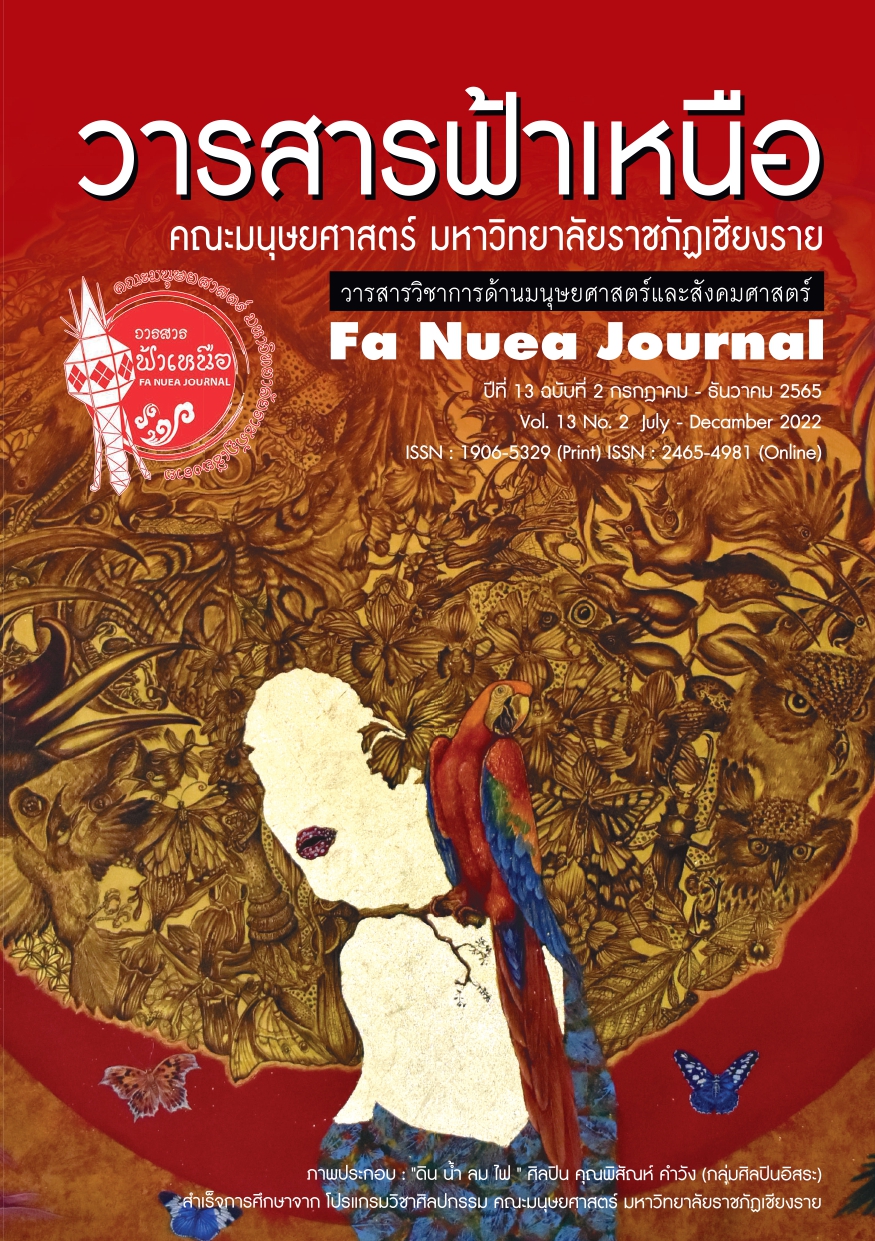Translation Quality Assessment of Health Services Based on House’s TQA Model for Foreigners at Pong Phrabat Hot Spring, Chiang Rai Province
Main Article Content
Abstract
The objective of this research article was to assess the quality of the source text (ST) translations to the target text (TT) translations from infographic media in order to upgrade health services for any foreigners who came for services at Pong Phrabat Hot Spring, Chiang Rai. The texts were translated from Thai into English based on House’s TQA Model. Group sampling used in this study was infographic information on the hot spring service at Pong Phrabat Hot Spring, Chiang Rai Province. The assessment framework consisted of Thai Language transmission to the target language in English with 3 aspects of accuracy, clarity, and naturalness of the target language respectively. The results showed that the quality assessment of translation language in all 3 aspects was high-level with a total average of 3.94 with S.D. of 0.82. When considering each aspect, the researchers also found that the aspect of accuracy was high-level at 4.17 with S.D. of 0.75. The aspect of clarity was at the highest level at 4.00 with S.D. of 0.89 while the aspect of naturalness was found to be high-level at 3.67 with S.D. of 0.82. Under the House’s TQA Model, this model can be effectively applied to these kinds of translations in terms of the pattern of grammatical, linguistic, and idiomatic translations.
Article Details

This work is licensed under a Creative Commons Attribution-NonCommercial-NoDerivatives 4.0 International License.
Articles, information, content, pictures, etc. which have been published in Fa Nuea Journal, are copyright of Fa Nuea Journal. If any person or party wishes to disseminate all or part of it or take any action must be referenced. Do not use for commercial purposes and do not modify (CC-BY-NC-ND). For further details, please access at Attribution-NonCommercial-NoDerivatives 4.0 International (CC BY-NC-ND 4.0)
References
Al-Qinai, J. (1999). Asymmetry of gender markedness in English-Arabic translation. Theoretical linguistics, 25 (1), 75-96.
Catford, J, C. (1978). A Linguistic Theory of Translation. Oxford University Press.
Drugan, J. (2013). Quality in professional translation. Bloomsbury.
House, J. (1977). A Model for Translation Quality Assessment. Narr.
House, J. (1981). A Model for translation quality assessment. Narr.
House, J. (1997). Translation Quality Assessment: A Model Revisited. Narr.
House, J. (2015). Translation Quality Assessment: Past and Present. Routledge.
Larson, M. (1998). Meaning-Based Translation: A Guide to Cross-Language Equivalence. University Press of America.
Nord, C. (1997). Translating as a purposeful activity. Stjerome.
Pornpimon Phatarasringkarn. (2006). An Analysis of the Translation of the Short Stories of Sea-Writer Award Receiver-Chart Korpjitti [Unpublished master’s thesis]. National Institute of Development Administration.
Reiss, K. (2000). Translation criticism: The potentials and limitations. Taylor & Francis.
Schafnner, C. Ed (1998). Translation and quality current issues in language and society. Multilingual Matters LTD.
Suchada Sangsanguan. (2014). An assessment of the textual function in the two Thai translations of Kahlil Gibran’s The Prophet using Juliane House’s model. [Unpublished master’s thesis]. Chulalongkorn University.
Williams, M. (2009). Translation quality assessment. Mutatis Mutandis, 2(1), 2-23.


